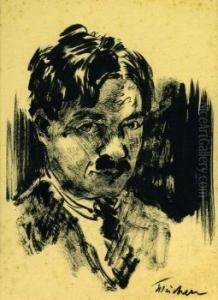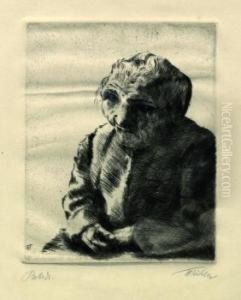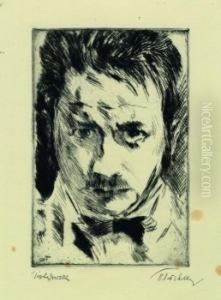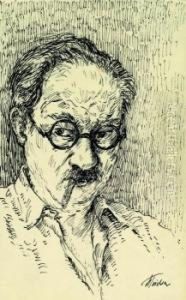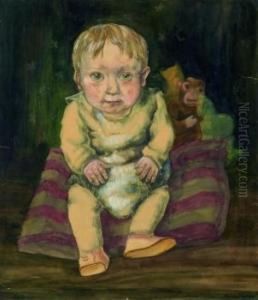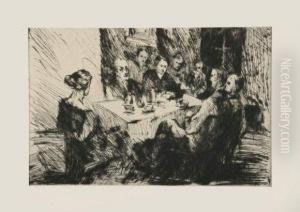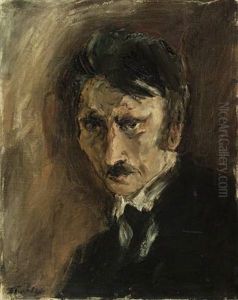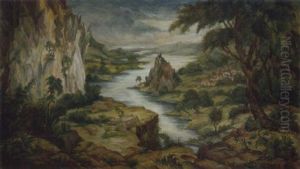Heinrich Tischler Paintings
Heinrich Tischler, a lesser-known figure in the early 20th century art world, offers a fascinating study of a creative mind that navigated through some of the most tumultuous periods in modern history. Born in 1884, Tischler's life and career spanned the late Austro-Hungarian Empire, two World Wars, and the shifting landscapes of European art movements. Despite the lack of widespread recognition, his contributions to art, particularly in the realms of sculpture and graphic design, provide valuable insights into the era's aesthetic and cultural transformations.
Tischler's early years were marked by an intense engagement with the artistic traditions of Vienna, a city that was a melting pot of cultural and intellectual activity in the late 19th and early 20th centuries. His education and initial artistic endeavors were influenced by the Secession movement, which sought to break away from the conservative constraints of the Vienna Künstlerhaus. This period was characterized by experimentation and a quest for a new artistic language that could encapsulate the complexities of modern life.
By the outbreak of World War I, Tischler had already established himself as a promising sculptor, with several exhibitions showcasing his work. However, the war and the subsequent collapse of the Austro-Hungarian Empire profoundly affected him, both personally and artistically. The post-war years saw a shift in his work, reflecting the broader existential and societal anxieties of the time. Tischler's sculptures from this period are marked by a more somber tone, often exploring themes of human suffering and resilience.
The rise of fascism and the onset of World War II forced Tischler into a period of exile. His works from this era are imbued with a sense of loss and longing for a world that was rapidly disintegrating. Despite these challenges, Tischler continued to produce art that engaged with the major political and social issues of his time. After the war, he settled in the United States, where he spent the latter part of his career teaching and working on public art projects.
Heinrich Tischler's death in 1981 marked the end of a long and productive life dedicated to exploring the potential of art to reflect and shape human experience. His legacy, though not as widely recognized as some of his contemporaries, offers a unique perspective on the role of the artist as both observer and commentator on the changing tides of history. Tischler's work remains a testament to the resilience of the human spirit in the face of adversity, and his artistic journey continues to inspire those who seek to understand the complex interplay between art and the world it inhabits.
